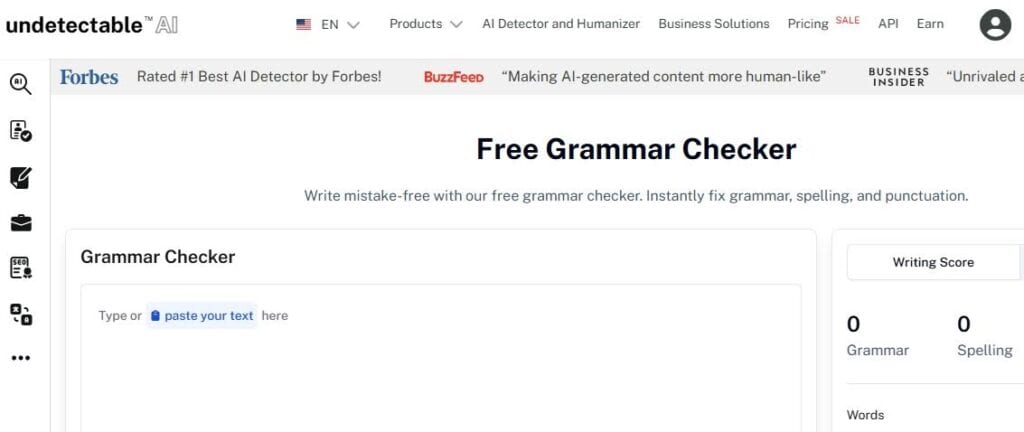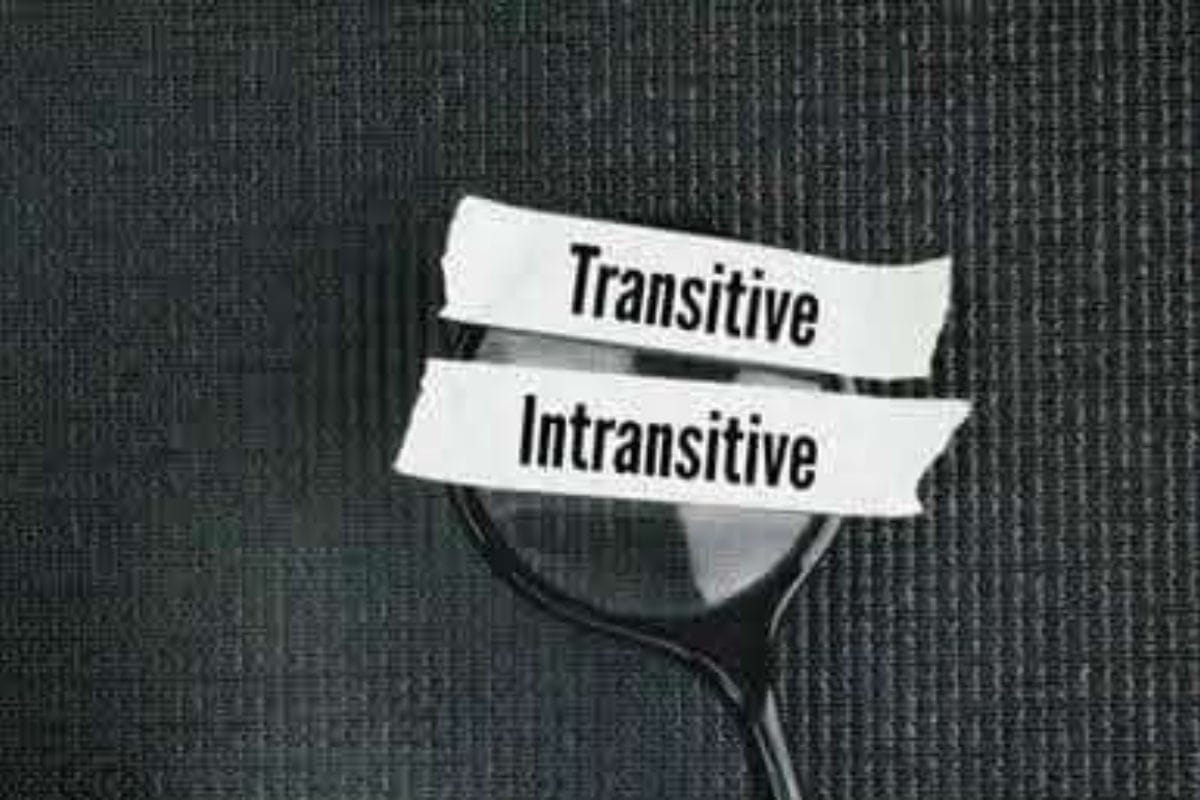Action verbs can be classified into two categories, the transitive (those verbs with direct object) and intransitive (those verbs without direct object).
You are likely well acquainted with intransitive verbs, whether you recognize them or not.
Today, we are going to explore all about intransitive verbs, with a lot of examples.
Key Takeaways
- Intransitive verbs complete their meaning without requiring direct objects to receive the action
- These verbs describe actions that begin and end with the subject performing them
- They follow standard subject-verb agreement rules across all tenses
- There are numerous verbs that can be used as either transitive or intransitive forms, according to the context
- The difference between them should be understood to prevent typical grammatical mistakes in writing and speaking.
What Is an Intransitive Verb?
Intransitive action verbs are those that do not have a direct object.
They express something complete and need not have a noun or a pronoun over which the action is to be done.
Fundamentally, the deed does not need to pass to something or someone else.


Never Worry About AI Detecting Your Texts Again. Undetectable AI Can Help You:
- Make your AI assisted writing appear human-like.
- Bypass all major AI detection tools with just one click.
- Use AI safely and confidently in school and work.
Think of intransitive verbs as actions in themselves. Such as when someone is ‘sleeping’, or “laughing,” there is nothing the action must affect in order to make complete sense.
The verb mere accomplishes this by stating what the subject is doing.
This makes the intransitive verbs highly instructive in the presentation of states of being, natural phenomena and activities that are not in progress.
Sentence Structure with Intransitive Verbs
Sentences with the form of intransitive verbs have a simple structure pattern organisation: subject + intransitive verb.
This forms a complete sentence without the use of extra objects. You can however, add adverbs, prepositional phrases or any other tenses containing how, when or where the action is being carried out.
As an instance, the sentence: “Birds fly,” is a complete sentence but you can add more words to it and say “Birds fly gracefully in the morning sky.”
Fly is intransitive because nothing is influenced by the process of flying.
Examples of Intransitive Verbs
Understanding intransitive verbs examples becomes clearer when you see them in action across different contexts and situations.
Common Verbs (Arrive, Sleep, Run, Cry)
A lot of everyday verbs are intransitive. The following are some examples:
- “Arrive” means going to a place without defining what one is going to do in the direct action of the verb.
- “Sleep” refers to a restful state that is independent of an object.
- “Run” connotes self-complete locomotion.
- “Cry” represents an expression of emotions that has no compulsion of influencing any other object to be significant.
Verbs like these exist often in everyday discussions, as this is due to the fact that they relate to essential human behavior and conditions.
Example Sentences Without Objects
Here are practical examples showing how intransitive verbs work in sentences:
- The children laughed during the movie.
- My grandmother arrives tomorrow.
- The cat sleeps peacefully in the sunlight.
- Students gathered in the library.
- The flowers bloomed early this spring.
- Thunder rumbled across the valley.
- Time passes quickly when you’re having fun.
- The audience applauded enthusiastically.
- Dogs bark at strangers.
- The fire spread rapidly through the forest.
Notice how each sentence feels complete without requiring a direct object to receive the action.
Intransitive Use in Real Communication
In the ordinary use of language, intransitive verbs are used to come up with a smooth conversation.
They enable speakers to give descriptions of actions, states, and conditions without necessarily naming recipients of the action.
This makes communication more efficient and prevents unnecessary complexity in simple statements.
Intransitive verbs are also used by writers to paint pictures.
They work well with narrative writing, especially as the latter is all about what is happening to characters and not what the characters are doing to something.
Intransitive verbs are useful when constructing a professional communication, because they make it easy to understand and clear in avoiding ambiguity.
The simplicity of intransitive constructions conveys business-related information effectively, making them ideal for business emails, reports and presentations.
Do intransitive verbs in your assignments or research work give you headaches? Do you wonder how to use them to write your school projects and your articles?
Our Undetectable AI’s Ask AI tool can help you understand and use these verbs properly. It can also help make your school projects stand out.
All you have to do is ask AI.

You can also use AI Chat to enquire about general intransitive verb questions. It is super versatile, quick with answers and great for getting practical information.

Transitive vs Intransitive Verbs
Transitive vs intransitive verbs create one of the greatest notions of English grammar.
While intransitive verbs can have their sentence structures completed without the use of objects, transitive verbs cannot.
Here is an example:
- Transitive: “She reads books.” This applies the transitive verb “reads” with a direct object “books.”
- Intransitive: “She sleeps.” Here, the intransitive verb “sleeping” does not require any object.
Generally, transitive verbs are considered to have cause-and-effect sense, which is a feature describing how one thing affects another.
The intransitive verbs are more centered on self-sustained actions that do not need other situations.
List of Verbs That Can Be Both
A lot of verbs can be used as intransitive as well as transitive.
The knowledge of switching transitive intransitive verbs helps you to become more versatile in your language usage
Examples of versatile verbs include:
| Example | Transitive | Intransitive |
| Run | She runs a successful business | Athletes run every morning. |
| Grow | Farmers grow vegetables | Plants grow naturally |
| Break | He broke the window | Glass breaks easily |
| Change | They changed their plans | Seasons change gradually |
| Move | We moved the furniture | Traffic moves slowly |
The key is identifying whether the verb needs an object to complete its meaning in each specific context.
Subject-Verb Agreement with Intransitive Verbs
Subject-verb agreement is still important when an intransitive verb is used as with all English verbs.
Singular and Plural Subjects
Singular subjects require singular verb forms, while plural subjects need plural verb forms.
With intransitive verbs, this rule applies consistently.
- “The bird flies” (singular) versus “The birds fly” (plural).
- “My sister arrives” (singular) versus “My sisters arrive” (plural).
Verb Tense Rules
Intransitive verbs follow standard tense patterns across all timeframes.
- Present tense describes current actions. E.g., “She walks to work.”
- Past tense indicates completed actions. Example, “She walked to work yesterday.”
- Future tense expresses upcoming actions. Example, “She will walk to work tomorrow.”
- Perfect tenses also work with intransitive verbs. Example: “She has walked to work all week” (present perfect) or “She had walked to work before the bus strike ended” (past perfect).
Agreement in Compound and Complex Sentences
In compound sentences, each clause with an intransitive verb must maintain proper subject-verb agreement independently.
- “The children play outside, and their parents relax indoors.” This shows correct agreement in both clauses.
Complex sentences with dependent clauses also require consistent agreement.
- “When the rain stops, we will go outside.” This sentence maintains proper agreement between “rain stops” and “we will go.”
Grammar Rules and Patterns
Several important grammar principles govern how intransitive verbs function in English sentences.
Below are some of these rules:
- Intransitive Verbs are Never Used in the Passive Voice: There must be no direct objects in intransitive verbs, and thus they cannot occur in the passive voice. The expression “she sleeps” cannot be altered into passive voice as there is no one or nothing to replace the subject in passive voice.
- Incorrect: “The sleeping was done by her.”
- Correct: “She sleeps.”
- These Verbs Can be Modified With Adverbs: These are verbs easily modified with adverbs that state how the thing is done. For example:
- The child laughed loudly
The adverb “loudly” is modifying the intransitive verb “laughed.”
- Can Not Have Direct Objects: A direct object with an intransitive verb is not grammatically correct.
- Incorrect: “She arrived the destination.”
- Correct: “She arrived at the destination.”
Another easy way is to use the Undetectable AI’s AI Grammar Checker to check these grammar principles. Our tool ensures that you place your verbs correctly.
It also makes sure that your sentences have clarity and better flow.

Intransitive Verbs in Different Tenses
Here are examples of intransitive verbs in different tenses.
By learning how the intransitive verbs work in various tenses, you will be able to use them in any type of communication.
Present, Past, and Perfect Tense Examples
Present tense usage of an intransitive verb explains actions or habits in progress, a general truth or habit that does not need any object to be accomplished.
Examples:
- “The sun comes out in the mornings.”
- “When children play they laugh.”
This indicates a behavior that occurs on a repetitive basis and does not influence other matters. It shows how intransitive verbs can be used to represent normal actions and reactions.
These forms in the present tense are so natural and immediate, and thus they would be appropriate to be used when one is describing the state of affairs (present), and a general truth.
They also indicate actions that are repetitive.
Past tense, on the other hand, shows that an action took place at a certain time in the past.
Examples:
- “The guests arrived late” shows a completed action with temporal specificity.
- “The storm ended suddenly.” describes a natural phenomenon that concluded on its own.
Perfect tenses add complexity by showing relationships between different periods and creating more sophisticated temporal connections.
Examples:
- “The flowers have bloomed beautifully this year” (present perfect)
- “Before we arrived, the meeting had started” (past perfect).
Progressive Forms and Sentence Flow
Progressive forms of intransitive verbs stress the continuity and constant action and introduce the idea of urgency and continuity into the message.
Examples:
- “The baby is sleeping” (present progressive) shows a current ongoing action.
- “The rain was falling heavily” (past progressive) describes a past ongoing action.
- “The students will be arriving soon” (future progressive) indicates a future ongoing action.
These progressive forms assist in making the sentence flow smoothly and also give accurate time information about when things are done.
They are especially helpful in narrative writing where depicting how long and how continuously actions take place allows the reader to visualize scenes and determine the relationships in time.
Common Mistakes with Intransitive Verbs

The most common mistake of English learners and even native speakers is to use intransitive verbs, or rather, to use objects where they are unnecessary.
Other examples include:
- Adding Unnecessary Direct Objects: One frequent mistake involves attempting to make intransitive verbs transitive by adding objects they cannot take.
- Incorrect: “He died his death.”
- Correct: “He died.”
- Attempting Passive Voice Constructions: Since intransitive verbs don’t have objects, they cannot be converted to passive voice.
- Incorrect: “The arrival was happened by the guests.”
- Correct: “The guests arrived.”
- Confusing Dual-function Verbs: Confusion often arises with verbs that can be both transitive and intransitive. Understanding the context and whether an object is necessary helps determine correct usage.
- Intransitive: The door opened
- Transitive: She opened the door
- Misunderstanding Prepositional Phrases: Some students are also deceived that the prepositional phrases that follow intransitive verbs ought to be direct objects.
- she walks to school
“to school” is a prepositional phrase providing direction, not a direct object receiving the action of walking.
- Creating False Causative Constructions: Students can attempt to transform intransitive verbs into causative form with the wrong use of adding make verb or other verbs of the same type, which spoils the natural sense.
- Incorrect: “The medicine made him died.”
- Correct: The medicine caused his death” or “He died from the medicine.”
- Improper Use of Reflexive Pronouns: This is a frequent mistake because students believe that intransitive verbs require an object of some sort, so they insert reflexive pronouns like “myself,” “himself,” or “herself.”
- Incorrect: “The baby sleeps himself”
- Correct: “The baby sleeps.”
Your go-to tools for polished, AI-proof writing—explore them in the widget below.
Final Thoughts
Intransitive verbs are important when it comes to using English as spoken words.
To raise your grammar skills to the next level, you can employ Undetectable AI tools that will help you become better at recognizing intransitive verbs and create more advanced sentence constructions.
With Undetectable AI’s Ask AI, AI Chat, and AI Grammar Checker, you can get instant feedback, ask grammar-related questions, and improve your sentence accuracy effortlessly.
AI-assisted learning can help you learn faster than with traditional learning methods and become a grammar champion in a short time.
Try Undetectable AI today to make mastering English grammar easier and more effective.
